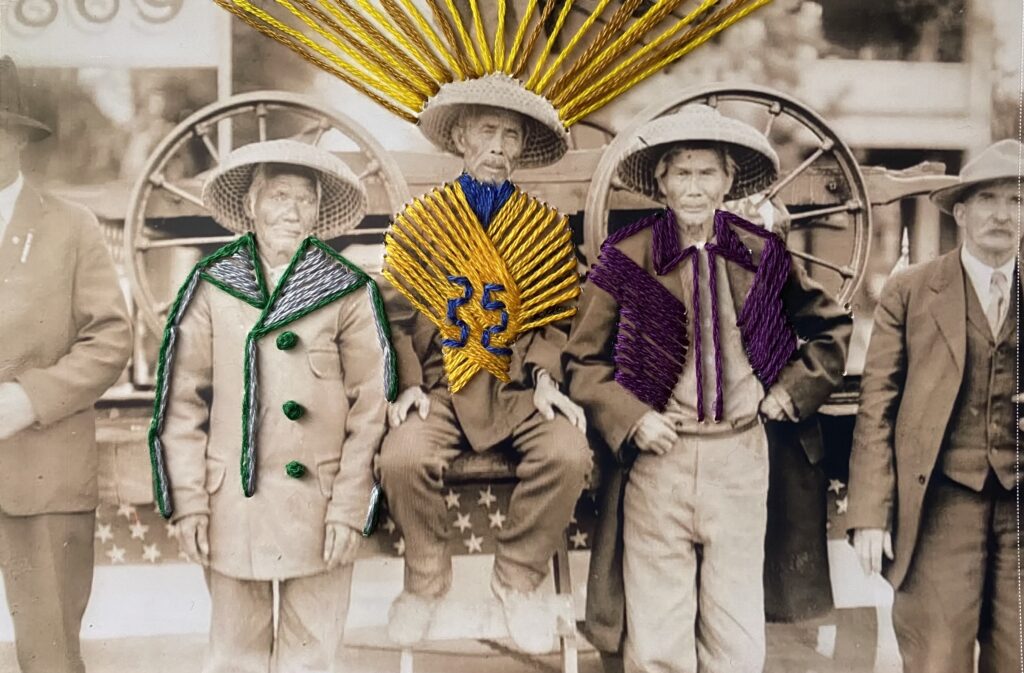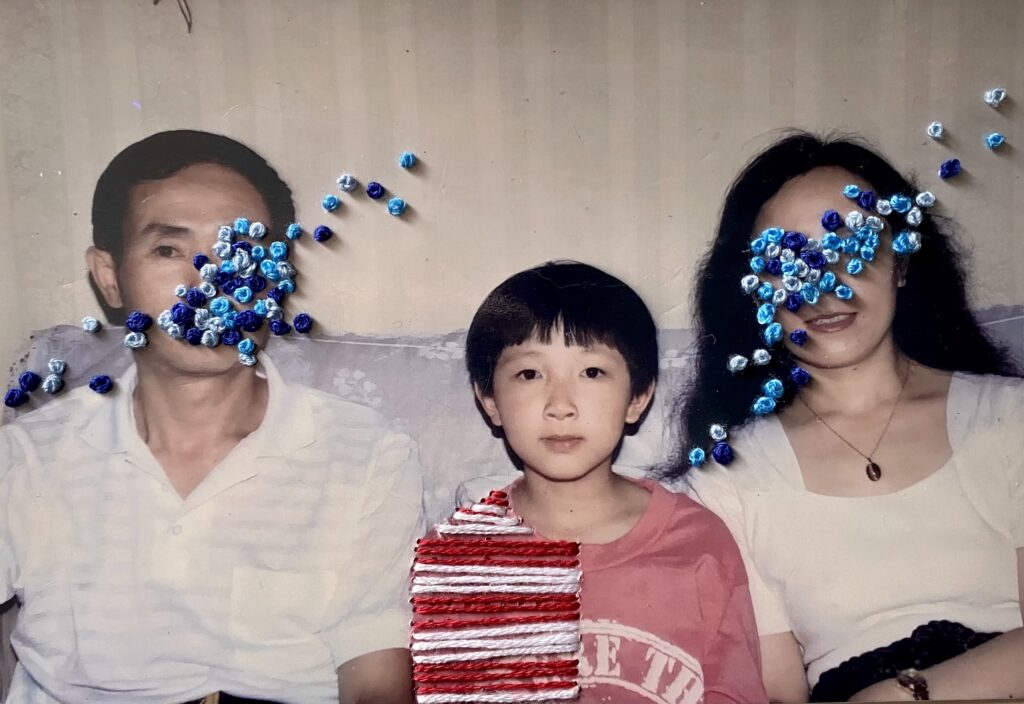

“How does the ‘colonial cultural archive’ shape experiences and encounters in diaspora space?”
This two-piece artwork highlights and attempts to a(mend) the invisibility of Chinese bodies and experiences, past, present and future, in the American colonial cultural archive. Chinese railroad workers were exploited and faced constant racism. Their presence and contribution were actively erased from historical documents while in the same popular cultural archive, Chinese faces and bodies were made conspicuous and un-American.
With embroidery, I foreground three workers as canonical figures, who stand dignified in rich, jeweled tones, rewriting history with and against the archive. As a member of the diaspora and living in a future created by these men, I also attempt to write my parents’ (super)ordinary lives into the cultural archive. Their faces are partially obscured because in the process of creating a tangible future for me, they had to relinquish some of their own visibility and identity. Half of my body is unaltered because I do not yet know, in the process of “trying to recognize, narrate, and come to terms with what [we] have lost—as well as gained—in immigration, migration, displacement, and diaspora”, what will have to happen for me to embody a futurity that is not mired in guilt, inadequacy and contingent on others’ loss and invisibility. How do I “go from being a subject of grief to being a subject of grievance”?
Ultimately, what I wish for myself is to not let my identity be “fixed in some essentialized past” or be defined by a framework of likeness, but to move forward and actively position myself within the narratives of a future of my own making, where I myself, and we ourselves, are enough and visible as how we wish to be seen.